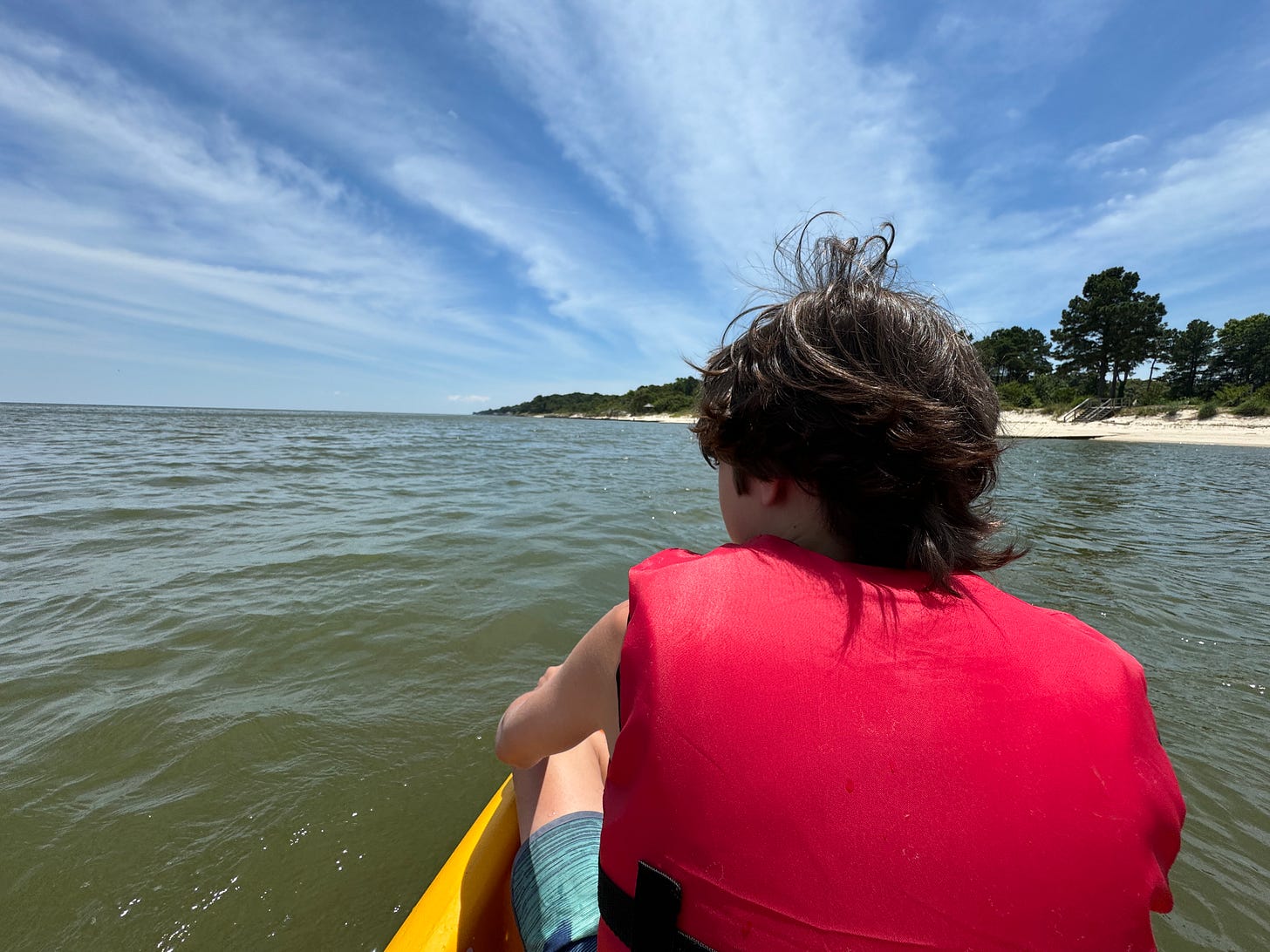I can’t say I’m a big paddler. What I can say is when we vacation at the bay for the summer, we bring the kayak.
After paddling a ways downstream with my son, we started paddling back to the cottage. Suddenly, the kayak wasn’t tracking the way I had hoped it would. The tide had begun to shift and it was a battle — felt mostly in my upper arms and ego — to correct course and steer back home.
After spraying the sand off our feet, my watch alerted me to a message from a client, who had toured a property with short term rental potential. Because I was out of town, I had arranged for my buyer to see the home with the property’s listing agent. That agent warned my buyer of potential zoning changes for Nelson County STRs. The rumor was that future STRs would need to be on property larger than 4 acres, with part time occupancy by the operator as a requirement.
That’s a significant claim. So I reached out to our county’s Planning and Zoning office for clarity.
“All I can confirm at this time is that the County is beginning an overhaul of the zoning and subdivision ordinances to align regulations with the newly adopted comprehensive plan,” Dylan Bishop, Nelson County Director of Planning and Zoning, wrote back. “It is uncertain exactly what those specifications will look like, but the projected timeline is an adoption date in Spring 2026.”
To be clear, any changes to the current requirements for operating STRs in the county would need to go through a public hearing process.
“Until then, current regulations still apply, and legally existing short term rentals (vacation houses) would remain legally vested, or valid nonconforming, uses after regulations change, as long as the use does not cease for 2+ years. For Special Use Permit requests regarding short term rentals, it is likely the BOS would delay a final decision until they have a clearer picture of what future regulations will be (they have up to one year to vote on SUP requests).”
In Dylan’s reply, she attached a copy of the memo she sent to the Board of Supervisors regarding this matter.
Short term rentals, accessory dwelling units (ADUs), green infrastructure, signs, design standards, connectivity, recreation, and overlay districts are all included for review and consideration.
And this line caught my eye:
Some potential options for overlay districts are a mountain ridge district to regulate or restrict steep slope development,
The below report by Berkley Group provides further details. Skip over to page 39 for discussion of a mountain ridge district.
It’s important to note — as the report says — the inclusion of a mountain ridge overlay district is optional as far as state zoning compliance goes. That being said, the preservation of our county’s view sheds is a matter P&Z can address with not only steep slope regulations, but landscaping and community design standards. In my experience, the mere cost of engineering ridgetop projects has been an effective deterrent. Buyers, do you really want to spend a fortune on roadwork to that ridge before you even begin pouring footers? I once had a builder tell me they told a prospective client hoping to site a cabin on a steep ridge, that the cost of delivering the concrete to the home site would add an additional $100k to the building price. Ouch.
If the County were to add a mountain ridge overlay district, state code defines a protected mountain ridge as being:
… a ridge with (i) an elevation of 2,000 feet or more and (ii) an elevation of 500 feet or more above the elevation of an adjacent valley floor.
Bringing this discussion back to sea level, it’s wise to remember that the tides can turn swiftly and it is every buyer’s responsibility to perform his due diligence.
Paddle on!






